After being cut, the hemp plants hang to dry Oct. 14 in Lexington, Missouri. It takes about 7-10 days for the hemp to dry before the flower is stripped from the stem.
DeeGee Rivers sifts out hemp leaves from the flowers Oct. 14 in Lexington, Missouri. After being sifted, the flowers get packed into barrels and sealed.
Austin Slater’s gloves sit during his break at the Hemp Hill processing facility Oct. 14 in Lexington, Missouri. Slater said that this pair already has a hole after only three days of use. Gloves are used to protect against the sticky terpenes of the hemp plant.
Austin Slater, right, weighs a newly harvested hemp plant Oct. 14 in Lexington, Missouri. Santos said that their record plant was 13.7 pounds before drying and including the stem.
Bo Payne pulls a sheet to protect and hide the plants’ transport to the processing facility Monday in Lexington. Victor Santos, head grower at Hemp Hill, said that the people of Lexington don’t always understand that hemp is different from cannabis and made sure that the workers had their paperwork in case they got pulled over.
Bo Payne moves the hemp flowers into barrels Oct. 14 in Lexington, Missouri. Hemp Hill has six employees but Santos said he will require more, around 50, for next season.
A freshly cut hemp plant sits next to its stump Oct. 14 in Lexington, Missouri. After getting cut, the plants are loaded into a truck to be taken to the processing facility.
Bo Payne untangles a hemp plant from plastic fencing Oct. 14 in Lexington, Missouri. This was the last batch of plants to be harvested for the season.
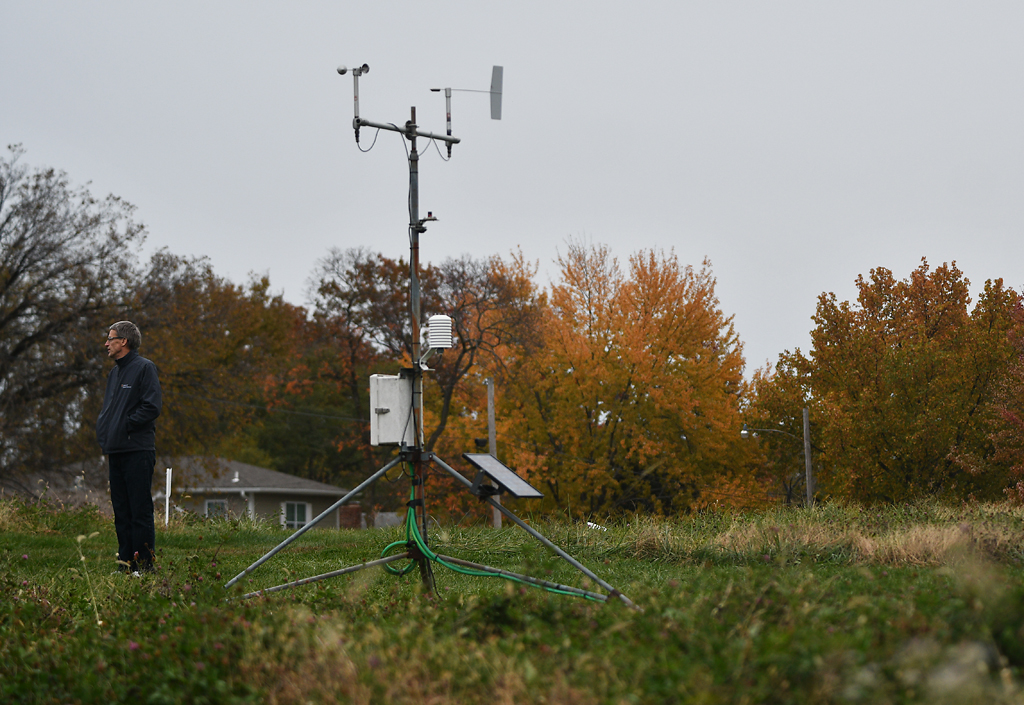
Pat Guinan stands next to a weather station on Monday, Nov. 4, 2019 at Sanborn Field. Guinan is the State Climatologist and he works with the 37 running weather stations within Missouri to provide research and information for farmers.
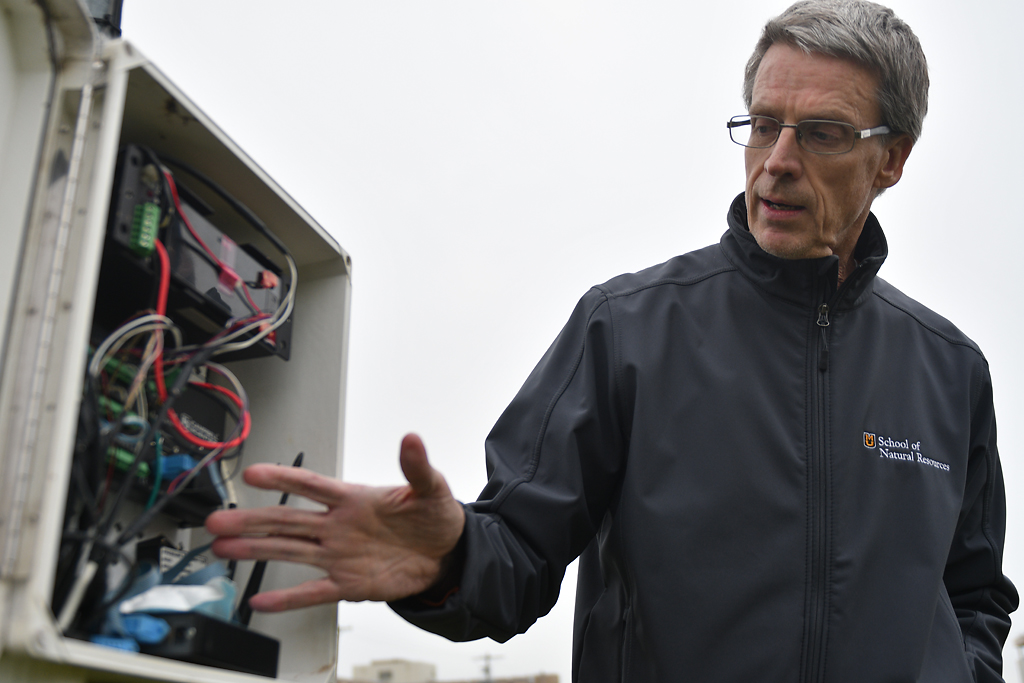
Pat Guinan shows the "brains" of the weather station on Monday, Nov. 4, 2019 at Sanborn Field. Data is collected and processed every three seconds and a radio modem transfers this data back to Eckles Hall to be published onto the Internet.
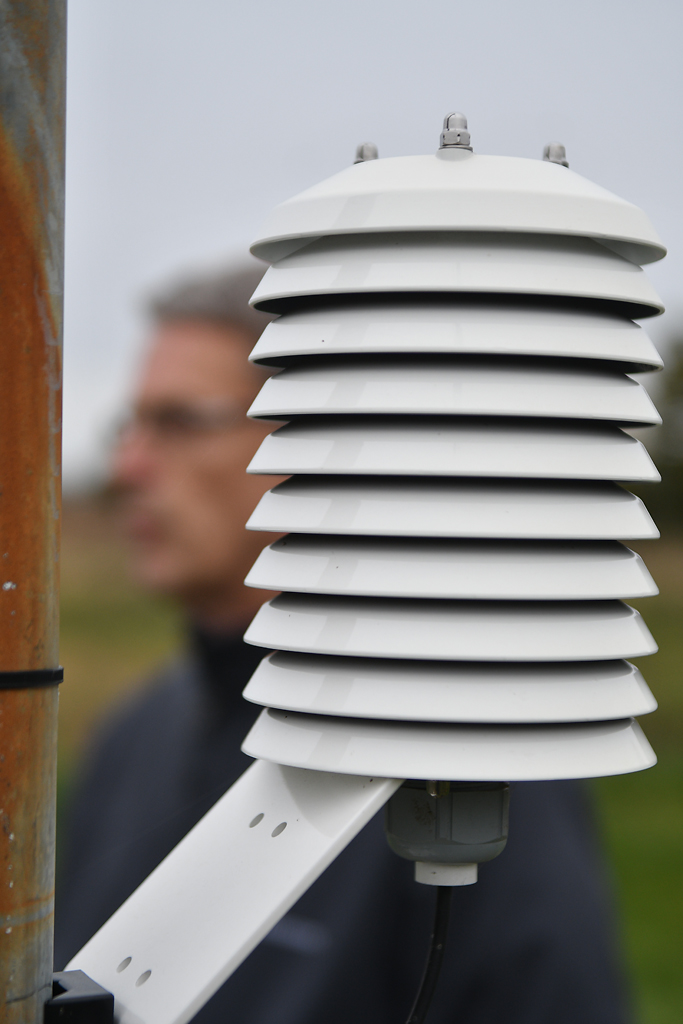
The radiation shield on the weather station on Monday, Nov. 4, 2019 at Sanborn Field. The radiation shield protects temperature and humidity sensors from direct sunlight to allow the sensors to give more precise measurements.
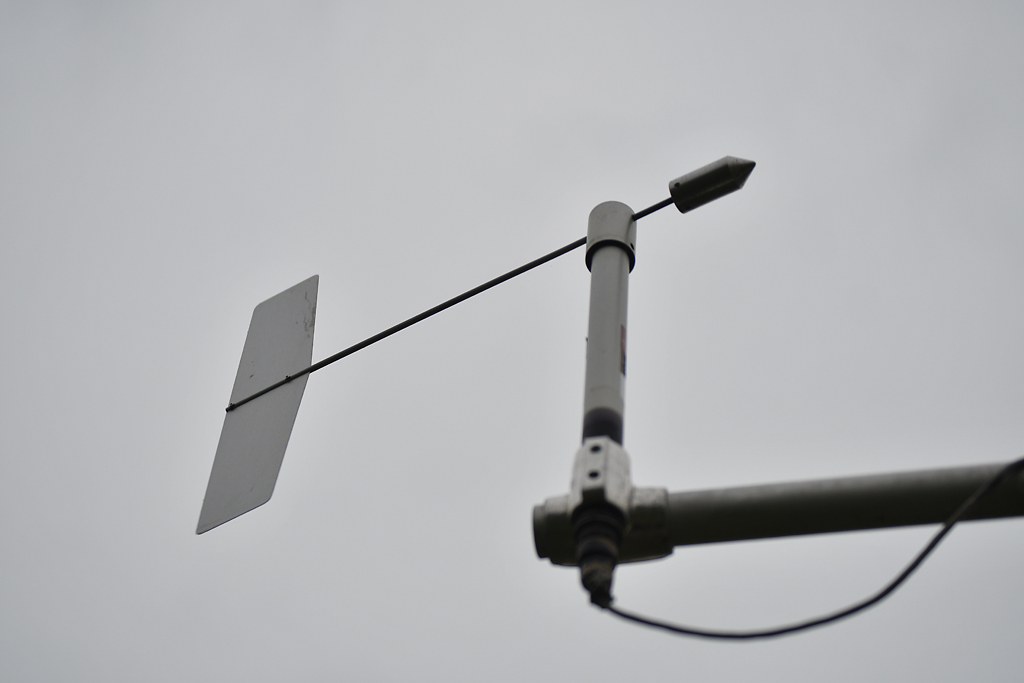
The anemometer on the weather station on Monday, Nov. 4, 2019 at Sanborn Field helps to determine the wind speed and direction. Farmers use this data to determine if they should spray fertilizers, as wind speeds above 10mph will not effectively spread the fertilizer onto the crops.
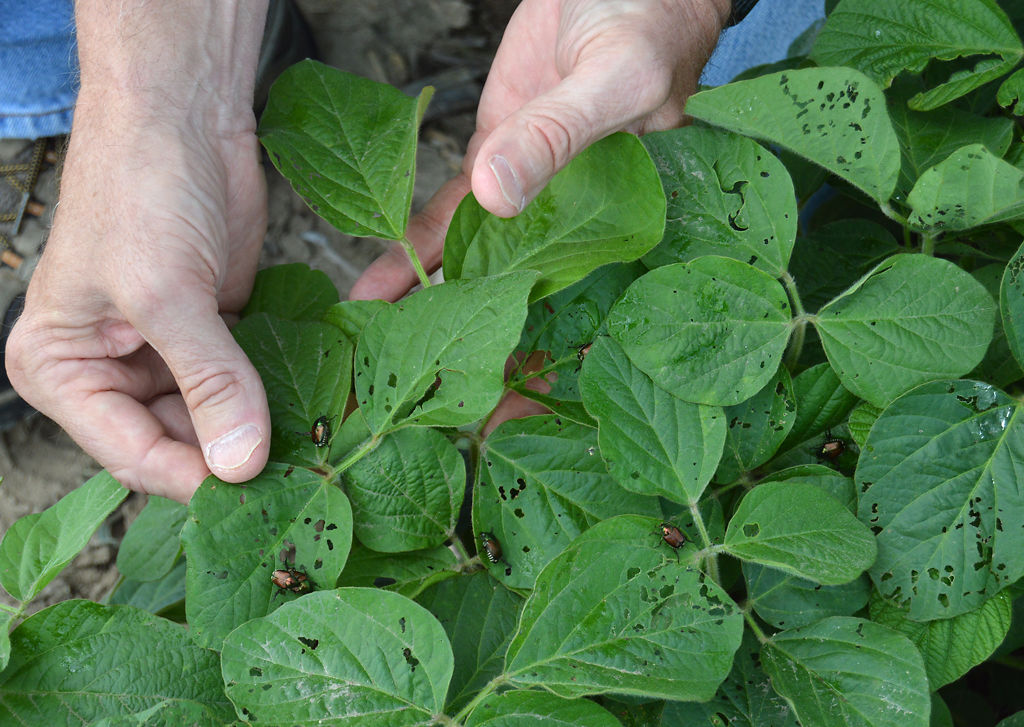
Japanese beetles are eating soybean plants this month at Bay Farm Research Facility, which causes foliar damage to the beans.

LEFT: Webworm webs cover a tree branch Tuesday in Harrisburg. The type of moth builds a web around tree branches during its larval stage. Though they are considered to be pests, the webs only kill the surrounding leaves. They don't harm the tree itself. CENTER: A McIntosh red apple damaged by invading Japanese beetles hangs from a branch Tuesday in Harrisburg. Danny Miller said his apples will double in size by the end of the growing season. He is in a race with nature to prevent Japanese beetles from destroying his apples before they reach full maturity. RIGHT: Japanese beetles linger on a leaf of an apple tree Tuesday in Harrisburg. Japanese beetles are an invasive species that have long been a nuisance to Missouri farmers all across the state.
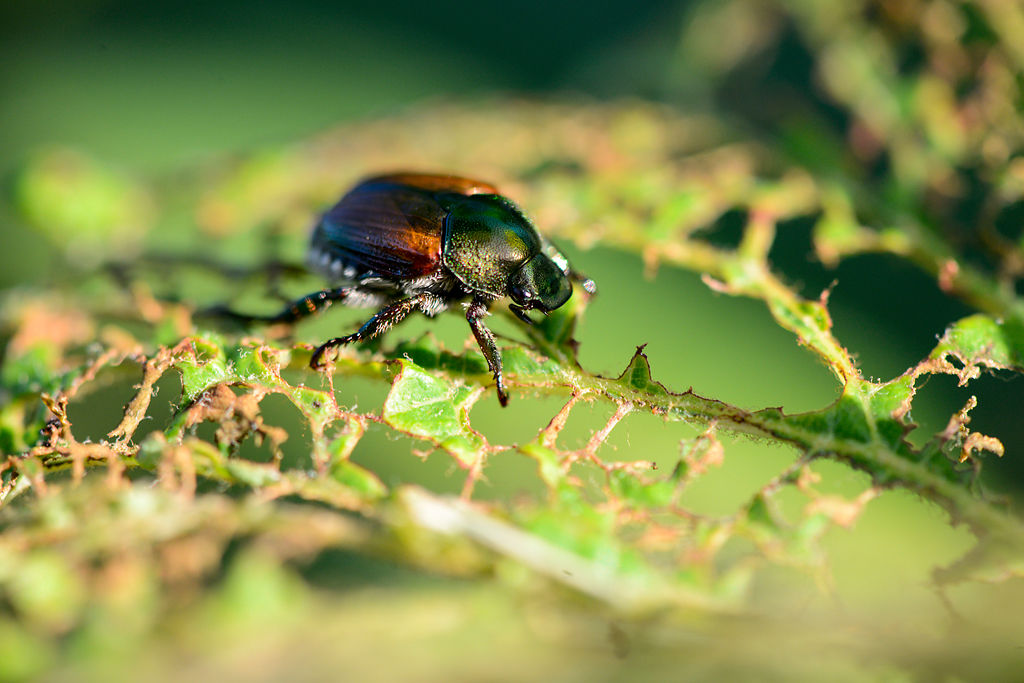
A Japanses beetle walks along a skeletonized leaf at Les Bourgeois Vineyard on Tuesday. When feeding, these beetles release a pheromone that tells others there is food, causing more to show up.
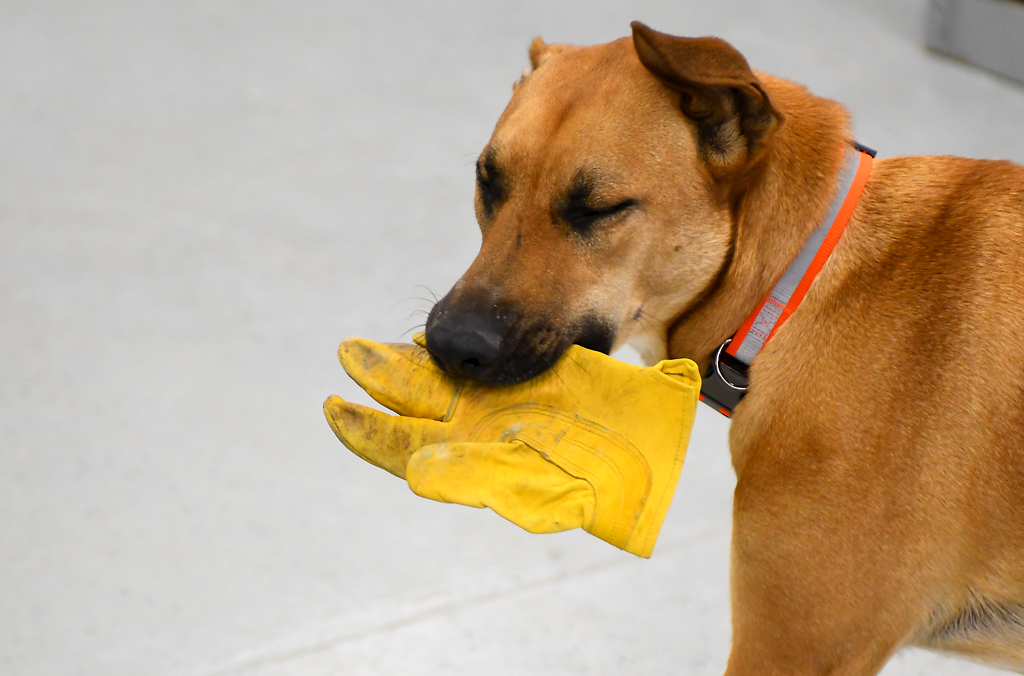
Zoe picks up a glove on Friday, Nov, 8, 2019 at Hundley-Whaley Research Center. This type of dog training helps farmers, especially those who struggle to bend down, get their gloves back should they drop or misplace them.
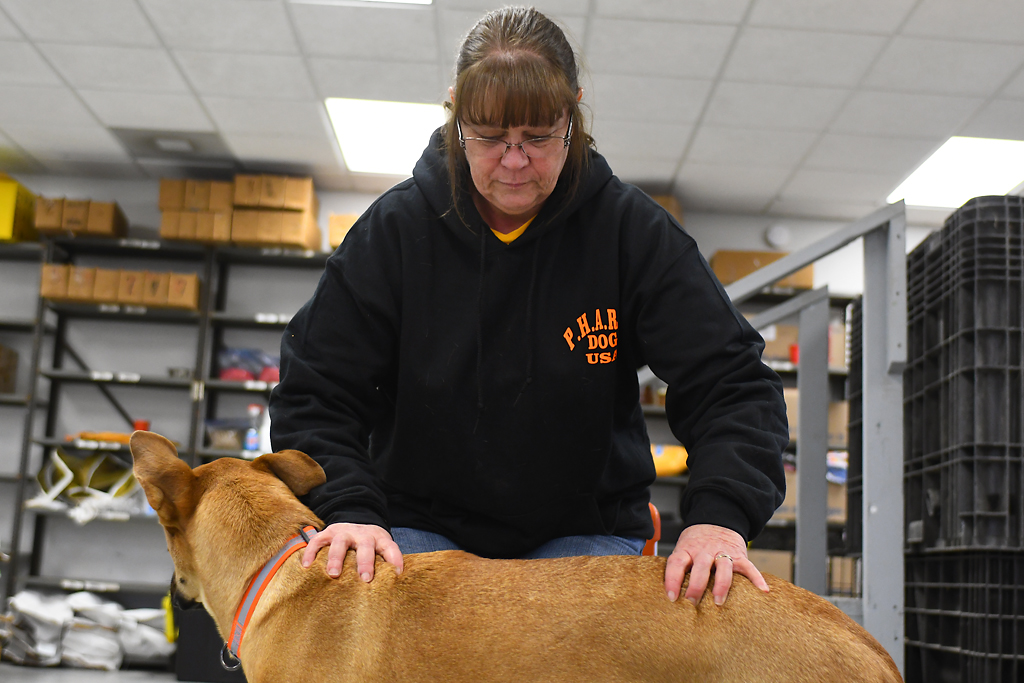
Zoe helps Lisa Hamilton off a chair as part of her training on Friday, Nov. 8, 2019 at Hundley-Whaley Research Center. The dogs at P.H.A.R.M. (Pets helping agriculture in rural Missouri) Dog USA are trained to provide support immediately once a farmer falls to help them get up.
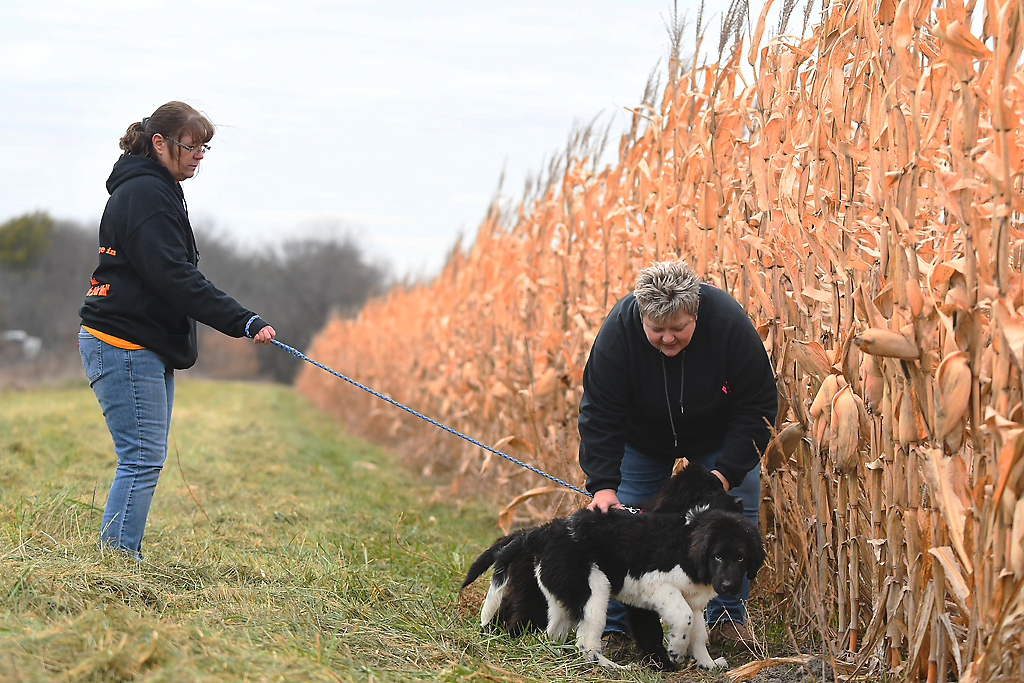
Lisa Hamilton and Jackie Allenbrand take Cash and Duffy out to a farm near the Hundley-Whaley Research center on Friday, Nov. 8, 2019. Allenbrand said that this helps the dogs to get used to farms, which will help them assimilate into their new environment once P.H.A.R.M. Dog USA finds a suitable farmer that require the dogs to help.
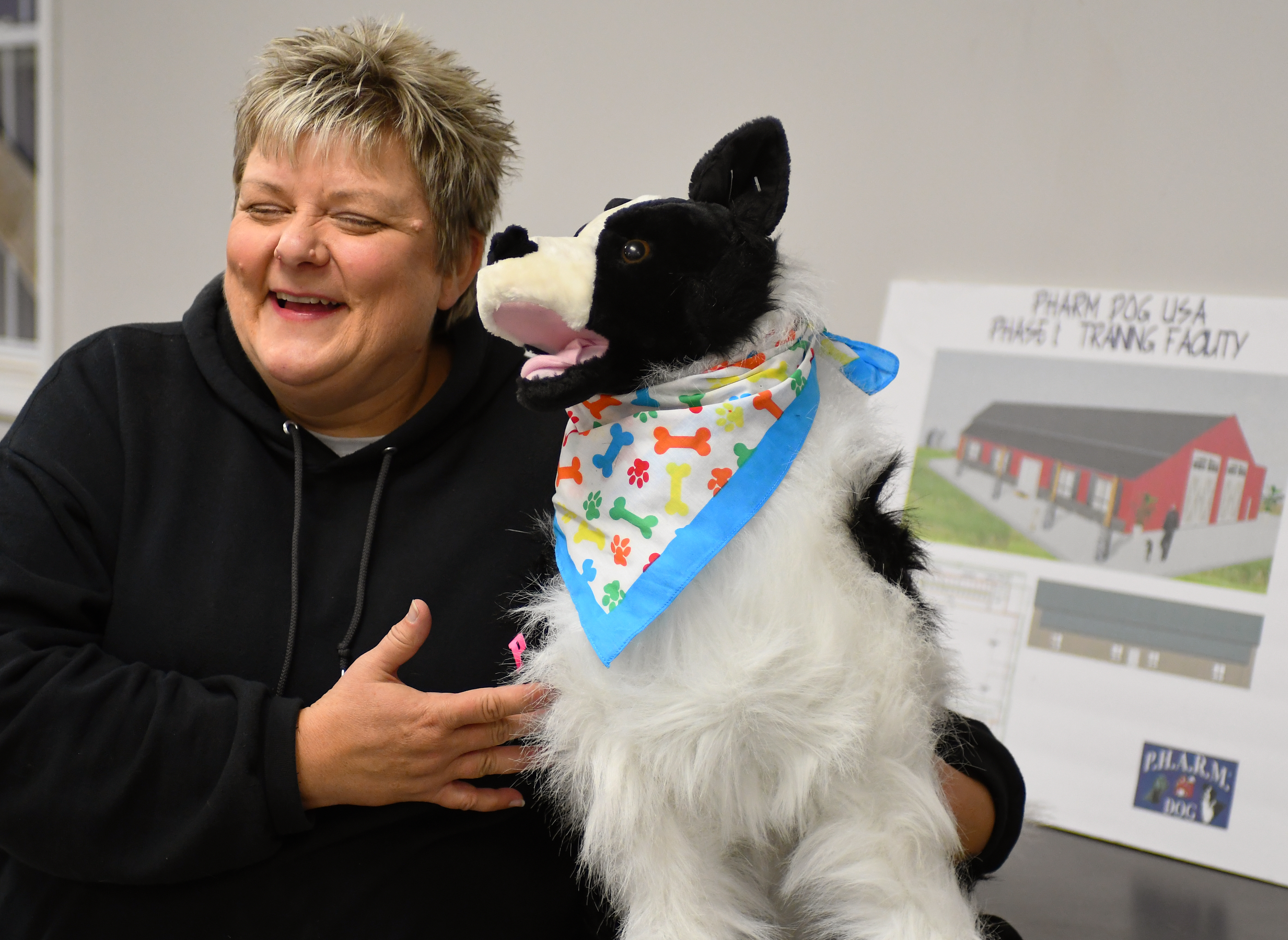
Jackie Allenbrand shows off a toy dog named Joe on Friday, Nov. 8, 2019 at Hundley-Whaley Research Center. Allenbrand created P.H.A.R.M. Dog USA with the goal of supporting farmers and farm family members with physical, cognitive or illness-related disabilities.
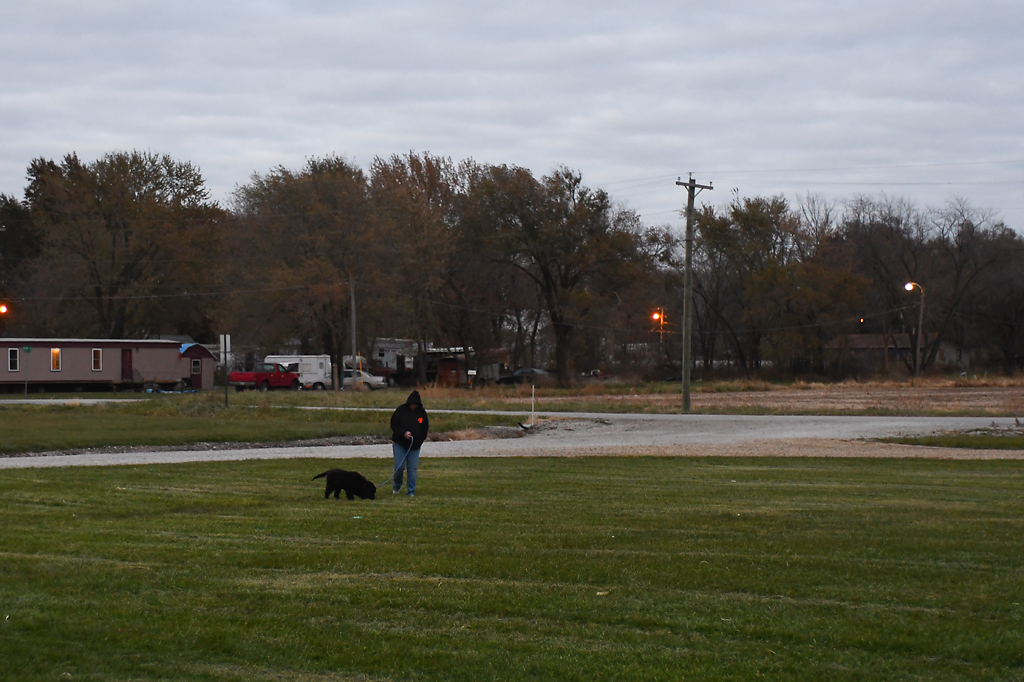
Lisa Hamilton takes Cash out for a walk on the lawn outside the Hundley-Whaley Research Center on Friday, Nov. 8, 2019. Hamilton and Allenbrand were high school friends.